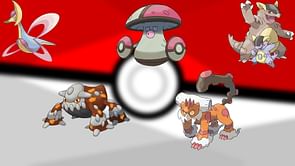The world of Pokemon is filled with various elemental types, each with its own strengths and weaknesses. To maximize your battle strategy, it’s crucial to understand how these types interact with one another. That is where the Pokemon Type Calculator comes in handy. This tool lets trainers easily calculate type advantages and disadvantages, making it an essential resource for every Pokemon trainer.
All about Pokemon Type Calculator
The Pokemon Type Calculator is a simple yet powerful tool designed to help trainers understand how different Pokemon types interact in battle. Whether you're preparing for a tough raid or strategizing for PvP, knowing which types are super-effective, resistant, or vulnerable can make all the difference.
This tool calculates the impact of one or multiple types in various matchups. With it, trainers can make smarter decisions, ensuring that their Pokemon team has the right type coverage to counter opponents.
How to use Pokemon Type Calculator
Using the Pokemon Type Calculator is straightforward and quick. Here’s a step-by-step guide to help you:
Enter Pokemon types: In the calculator, select up to two Pokemon types (for dual-type Pokemon) or one for single-type Pokemon.
Select the opposing type: Choose the type of your opponent’s Pokemon. You can select single or dual types as well.
Hit calculate: Once the types are entered, click the "Calculate" button to get the results.
Analyze the results: The calculator will display which types are strong or weak against your chosen type combination, allowing you to plan your battle strategy accordingly.
Benefits of using Pokemon Type Calculator
Using the Pokemon Type Calculator offers several benefits for trainers:
Strategic advantage: Get real-time insights into type matchups, ensuring you choose the right Pokemon for every battle.
Efficiency in battles: Save time by quickly determining strengths and weaknesses, allowing you to optimize your team’s effectiveness.
Perfect for PvP and Raids: Whether you’re battling in GO Battle League or taking on a 5-star raid boss, knowing the right type matchups gives you a significant edge.
Learning tool: The calculator also serves as a learning tool, helping new players understand the complex type relationships in Pokemon.
Why Pokemon Type Matchups matter
To add depth to the page, you could include a section explaining why Pokemon type matchups are critical for both casual and competitive gameplay. Understanding the nuances of type combinations can make or break your strategy in battles, making tools like this invaluable.
Type coverage and team building
When building a Pokemon team, type coverage is essential to ensure that your team can handle a wide variety of opponents. Type coverage refers to having a diverse set of Pokemon or moves that can hit as many different types as possible for super-effective damage.
Why Type coverage is important:
Minimizing weaknesses: If your team has too many Pokemon of the same type, it becomes vulnerable to a specific weakness. For example, if your team has multiple Grass-types, it will be at a disadvantage against Fire-type opponents.
Maximizing offense: Having a range of types on your team allows you to exploit the weaknesses of your opponent’s Pokemon more effectively. A well-rounded team might have a combination of types such as Fire, Water, and Ground to cover as many type matchups as possible.
How to use the Calculator for team building:
You can input your team’s types into the Pokemon Type Calculator to see which types you're weak or strong against.
It helps to identify any overlapping weaknesses and allows you to adjust your team for better coverage.
What are Dual-Type Pokemon
Dual-type Pokemon have two elemental types instead of just one, which can make them more versatile in battle. These Pokemon benefit from a broader range of resistances and super-effective moves, but they can also inherit more weaknesses. Understanding how dual-type Pokemon work is crucial because their type interactions can be more complex.
For example, a Grass/Poison-type Pokemon like Venusaur has resistances to Grass, Electric, Fighting, and Fairy moves, but is weak to Flying, Fire, Ice, and Psychic attacks. When using the Pokemon Type Calculator, selecting both types will give you a clear understanding of the overall effectiveness of that dual-type in any matchup.
Offensive vs defensive Type Matchups
Pokemon types are classified not just by their weaknesses and resistances but also by their offensive or defensive potential. Some types, like Fighting, are great offensively, dealing super-effective damage to five different types, while others, like Steel, are known for their defensive utility, resisting many different types of moves.
Pokemon Type Calculator FAQs
A combination of Ground, Flying, Fighting, Ice, Dark, and Grass will give you solid coverage against most type matchups.
While it is not possible for four moves to cover all types, the best move combination that covers most types includes Fighting, Ice, Ground, and Flying-type moves, allowing you to hit 14 types (out of the 18 that exist).
Ground-type Pokemon are strong against five different types including Electric, Fire, Poison, Rock, and Steel. On par with Ground types, Fighting types also are strong against five types including Normal, Steel, Rock, Dark and Ice.
No type is objectively the strongest, due to all having weaknesses. Some favor Steel-types for being defensively the best, while contrastingly Psychic and Fairy-types are offensively liked. Dragon-types are well bell balanced with their stats which makes them a safe choice to many players.
Normal/Ghost-type Pokemon are among the best dual types due to having only one weakness (Dark-type) and three immunities (Ghost, Normal, and Fighting). As of now, in Generation 9, only Hisuian Zorua and Hisuian Zoroark have this typing. Other notable dual types include Ghost/Dark (weak to only Fairy), Poison/Dark (weak to Ground), Water/Ground (4x weak to Grass) and Bug/Steel (4x weak to Fire).











